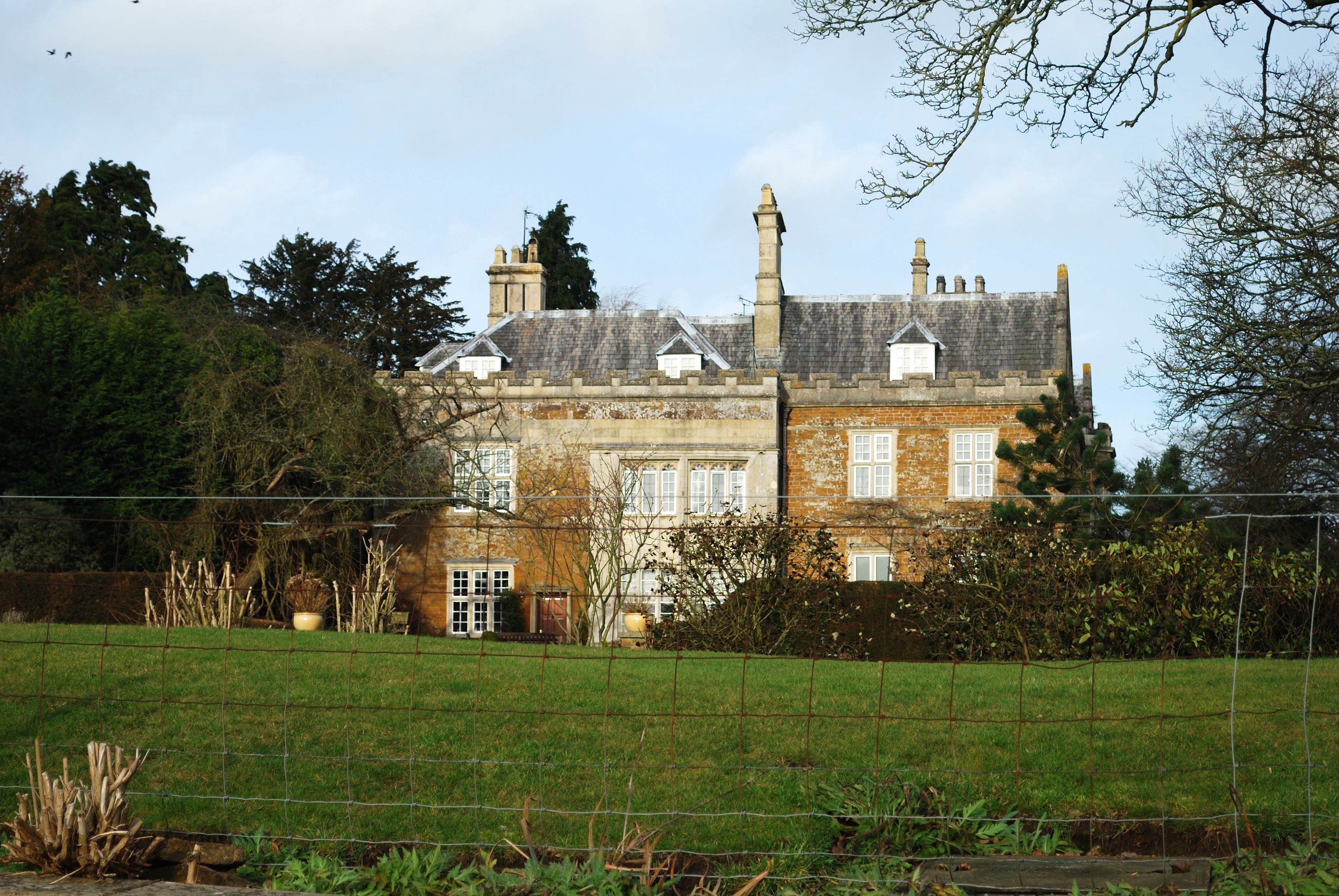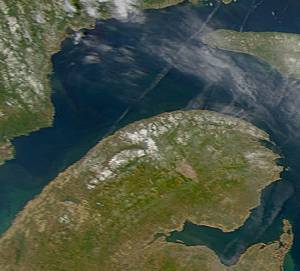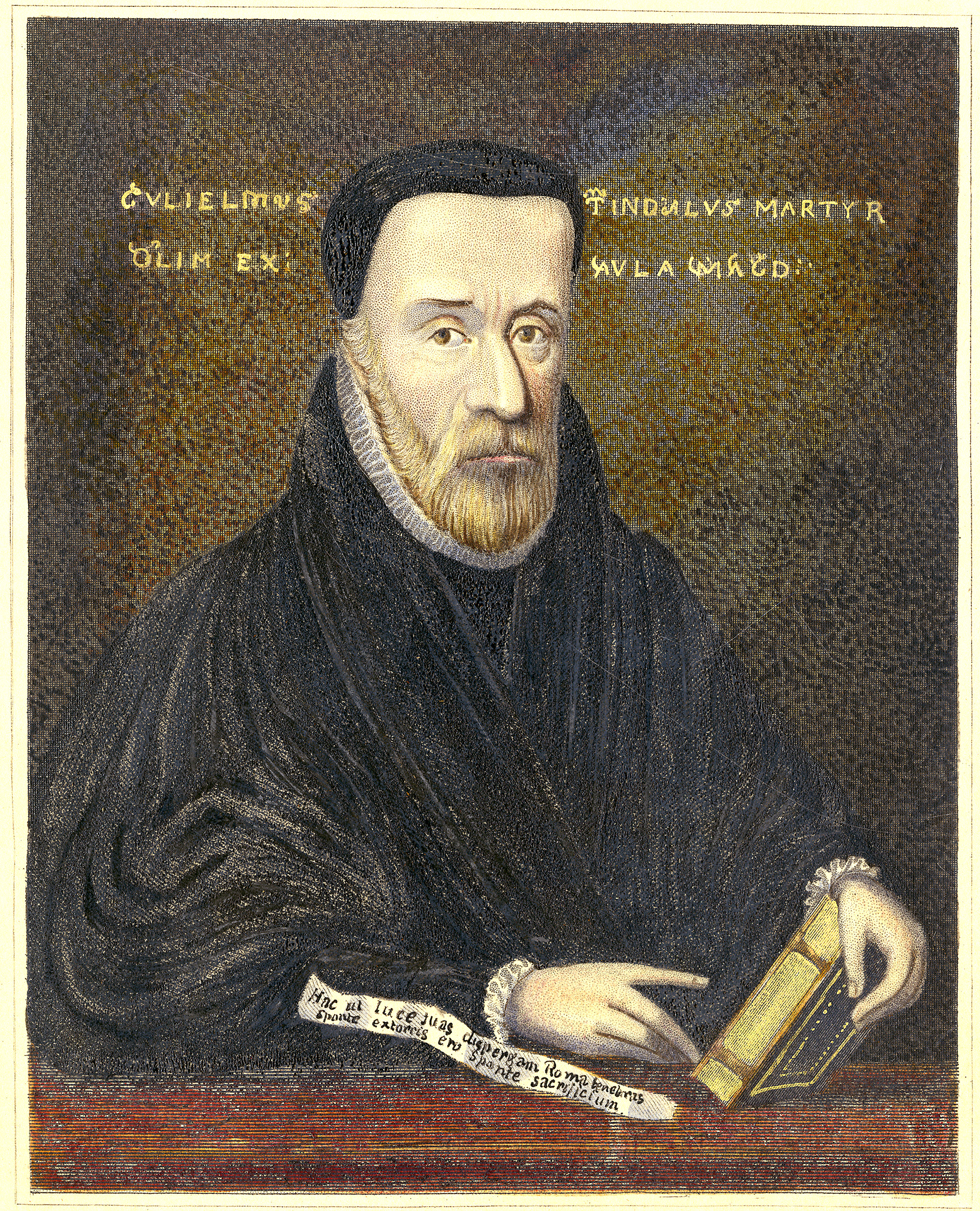|
1535
__NOTOC__ Year 1535 ( MDXXXV) was a common year starting on Friday (link will display the full calendar) of the Julian calendar. Events January–June * January 18 – Lima, Peru, is founded by Francisco Pizarro, as '' Ciudad de los Reyes''. * February 27 – George Joye publishes his ''Apologye'' in Antwerp, to clear his name from the accusations of William Tyndale. * March – English forces under William Skeffington storm Maynooth Castle in Ireland, the stronghold of Thomas FitzGerald, 10th Earl of Kildare. * March 10 – Fray Tomás de Berlanga discovers the Galápagos Islands, when blown off course ''en route'' to Peru. * May 4 – The first of the English Carthusian Martyrs is executed. * May 10 – Amsterdam: A small troop of Anabaptists, led by the minister Jacob van Geel, attacks the city hall, in an attempted coup to seize the city. In the counter-attack by the city's militia, the burgemeester, Pieter Colijns, is killed by the rebels. I ... [...More Info...] [...Related Items...] OR: [Wikipedia] [Google] [Baidu] |
Jacques Cartier
Jacques Cartier ( , also , , ; br, Jakez Karter; 31 December 14911 September 1557) was a French-Breton maritime explorer for France. Jacques Cartier was the first European to describe and map the Gulf of Saint Lawrence and the shores of the Saint Lawrence River, which he named "The Country of Canadas" after the Iroquoian names for the two big settlements he saw at Stadacona (Quebec City) and at Hochelaga (Montreal Island).. Early life Jacques Cartier was born in 1491 in Saint-Malo, the port on the north-east coast of Brittany. Cartier, who was a respectable mariner, improved his social status in 1520 by marrying Mary Catherine des Granches, member of a leading aristocratic family. His good name in Saint-Malo is recognized by its frequent appearance in baptismal registers as godfather or witness. First voyage (1534) In 1534, two years after the Duchy of Brittany was formally united with France in the Edict of Union, Cartier was introduced to King Francis I by Jean Le V ... [...More Info...] [...Related Items...] OR: [Wikipedia] [Google] [Baidu] |
George Joye
George Joye (also Joy and ) (c. 1495 – 1553) was a 16th-century Bible translator who produced the first printed translation of several books of the Old Testament into English (1530–1534), as well as the first English Primer (1529). His life Education He was born Salpho Bury, Renhold, Bedford, Bedfordshire, England, around 1495. He studied at Christ's College, Cambridge where he graduated as Bachelor of Arts (1513 or 1514). In 1515 he was ordained priest. In 1517 he obtained the degree of Master of Arts, was elected Fellow of Peterhouse and became "inceptor in arte." In 1525 Joye graduated as Bachelor of Divinity. During his years in Cambridge, he came into contact with several people who later became prominent figures of the Protestant Reformation. Under their influence Joye also embraced Luther's ideas. In 1526, when the premises of the university were searched and Joye's copy of Chrysostom's exegetical sermons on the Book of Genesis in Johannes Oecolampadius' translation ... [...More Info...] [...Related Items...] OR: [Wikipedia] [Google] [Baidu] |
William Skeffington
Sir William Skeffington (c. 146531 December 1535) was an English knight who served as Lord Deputy of Ireland. Early life William Skeffington was born in Skeffington Hall, Leicestershire, the eldest son of Thomas Skeffington by his wife, Mary. His brother John was the patriarch of the Massareene family. He succeeded his father in 1496. Career William was appointed High Sheriff of Leicestershire and High Sheriff of Warwickshire, Warwickshire for 1508, 1515 and 1521. He was knighted by King Henry VII of England, King Henry VII in 1509 and appointed Master of the Ordnance from 1515 to 1534. He accompanied King Henry VIII of England, King Henry VIII together with other knights to the king's iconic meeting in 1520 with King Francis I of France at the Field of the Cloth of Gold. In 1523, he received from Henry VIII property near Tunbridge that had belonged to the executed traitor Henry Stafford, 2nd Duke of Buckingham and in 1529 represented Leicestershire (UK Parliament constituenc ... [...More Info...] [...Related Items...] OR: [Wikipedia] [Google] [Baidu] |
Kingdom Of England
The Kingdom of England (, ) was a sovereign state on the island of Great Britain from 12 July 927, when it emerged from various Anglo-Saxon kingdoms, until 1 May 1707, when it united with Scotland to form the Kingdom of Great Britain. On 12 July 927, the various Anglo-Saxon kings swore their allegiance to Æthelstan of Wessex (), unifying most of modern England under a single king. In 1016, the kingdom became part of the North Sea Empire of Cnut the Great, a personal union between England, Denmark and Norway. The Norman conquest of England in 1066 led to the transfer of the English capital city and chief royal residence from the Anglo-Saxon one at Winchester to Westminster, and the City of London quickly established itself as England's largest and principal commercial centre. Histories of the kingdom of England from the Norman conquest of 1066 conventionally distinguish periods named after successive ruling dynasties: Norman (1066–1154), Plantagenet (1154–1485), Tudor ... [...More Info...] [...Related Items...] OR: [Wikipedia] [Google] [Baidu] |
Lima
Lima ( ; ), originally founded as Ciudad de Los Reyes (City of The Kings) is the capital and the largest city of Peru. It is located in the valleys of the Chillón River, Chillón, Rímac River, Rímac and Lurín Rivers, in the desert zone of the central coastal part of the country, overlooking the Pacific Ocean. Together with the seaside city of Callao, it forms a contiguous urban area known as the Lima Metropolitan Area. With a population of more than 9.7 million in its urban area and more than 10.7 million in its metropolitan area, Lima is one of the largest cities in the Americas. Lima was named by natives in the agricultural region known by native Peruvians as ''Limaq''. It became the capital and most important city in the Viceroyalty of Peru. Following the Peruvian War of Independence, it became the capital of the Republic of Peru (República del Perú). Around one-third of the national population now lives in its Lima Metropolitan Area, metropolitan area. The city of Li ... [...More Info...] [...Related Items...] OR: [Wikipedia] [Google] [Baidu] |
Galápagos Islands
The Galápagos Islands (Spanish: , , ) are an archipelago of volcanic islands. They are distributed on each side of the equator in the Pacific Ocean, surrounding the centre of the Western Hemisphere, and are part of the Republic of Ecuador. Located west of continental Ecuador, the islands are known for their large number of endemic species that were studied by Charles Darwin during the second voyage of HMS ''Beagle''. His observations and collections contributed to the inception of Darwin's theory of evolution by means of natural selection. The Galápagos Islands and their surrounding waters form the Galápagos Province of Ecuador, the Galápagos National Park, and the Galápagos Marine Reserve. The principal language on the islands is Spanish. The islands have a population of slightly over 25,000. The first recorded visit to the islands happened by chance in 1535, when Fray Tomás de Berlanga, the Bishop of Panamá, was surprised to find this undiscovered land on a vo ... [...More Info...] [...Related Items...] OR: [Wikipedia] [Google] [Baidu] |
Chief Donnacona
Chief Donnacona (died 1539 in France) was the chief of the St. Lawrence Iroquois village of Stadacona, located at the present site of Quebec City, Quebec, Canada. French explorer Jacques Cartier, concluding his second voyage to what is now Canada, returned to France with Donnacona. Donnacona was treated well in France but he died there. Later Cartier would make a third voyage to the same area. Cartier's first voyage Jacques Cartier made three voyages to the land now called Canada, in 1536, 1538 and 1549. In late July 1534, in the course of his first voyage, he and his men encountered two hundred people fishing near Gaspé Bay. Cartier's men erected a "thirty foot long" cross which provoked a reaction from the leader of this fishing party. After some presentation of gifts to the people there, he left the area the next day, with two men on board, Domagaya and Taignoagny, from the fishing party. He returned to France with them, concluding his first voyage in September 1534. S ... [...More Info...] [...Related Items...] OR: [Wikipedia] [Google] [Baidu] |
Francisco Pizarro
Francisco Pizarro González, Marquess of the Atabillos (; ; – 26 June 1541) was a Spanish conquistador, best known for his expeditions that led to the Spanish conquest of Peru. Born in Trujillo, Spain to a poor family, Pizarro chose to pursue fortune and adventure in the New World. He went to the Gulf of Urabá, and accompanied Vasco Núñez de Balboa in his crossing of the Isthmus of Panama, where they became the first Europeans to see the Pacific Ocean from the Americas. He served as mayor of the newly founded Panama City for a few years and undertook two failed expeditions to Peru. In 1529, Pizarro obtained permission from the Spanish crown to lead a campaign to conquer Peru and went on his third, and successful, expedition. When local people who lived along the coast resisted this invasion, Pizarro moved inland and founded the first Spanish settlement in Peru, San Miguel de Piura. After a series of manoeuvres, Pizarro captured the Incan emperor Atahualpa at the ... [...More Info...] [...Related Items...] OR: [Wikipedia] [Google] [Baidu] |
Thomas FitzGerald, 10th Earl Of Kildare
{{Infobox noble, type , name = Thomas FitzGerald , title = The Earl of Kildare , image = Thomas FitzGerald, 10th Earl of Kildare.jpg , caption = , alt = , CoA = , more = no , succession = , reign = 1534–1537 , reign-type = Reign , predecessor = Gerald FitzGerald , successor = Title forfeited , suc-type = , spouse = , spouse-type = , issue = , issue-link = , issue-pipe = , full name = , styles = , titles = , noble family = FitzGerald dynasty , house-type = , father = Gerald FitzGerald , mother = Elizabeth Zouche , birth_date = 1513 , birth_place = , christening_date = , christening_place = , death_date = 3 February 1537 (aged 23/24) , death_place = Tyburn, London, K ... [...More Info...] [...Related Items...] OR: [Wikipedia] [Google] [Baidu] |
Anabaptists
Anabaptism (from New Latin language, Neo-Latin , from the Greek language, Greek : 're-' and 'baptism', german: Täufer, earlier also )Since the middle of the 20th century, the German-speaking world no longer uses the term (translation: "Re-baptizers"), considering it biased. The term (translation: "Baptizers") is now used, which is considered more impartial. From the perspective of their persecutors, the "Baptizers" baptized for the second time those "who as infants had already been baptized". The denigrative term Anabaptist, given to them by others, signifies rebaptizing and is considered a polemical term, so it has been dropped from use in modern German. However, in the English-speaking world, it is still used to distinguish the Baptizers more clearly from the Baptists, a Protestant sect that developed later in England. Compare their self-designation as "Brethren in Christ" or "Church of God": . is a Protestantism, Protestant List of Christian movements, Christian movement ... [...More Info...] [...Related Items...] OR: [Wikipedia] [Google] [Baidu] |
William Tyndale
William Tyndale (; sometimes spelled ''Tynsdale'', ''Tindall'', ''Tindill'', ''Tyndall''; – ) was an English biblical scholar and linguist who became a leading figure in the Protestant Reformation in the years leading up to his execution. He is well known as a translator of the Bible into English, and was influenced by the works of prominent Protestant Reformers such as Martin Luther. Luther's translation of the Christian Bible into German appeared in 1522. Tyndale's translation was the first English Bible to draw directly from Hebrew and Greek texts, the first English translation to take advantage of the printing press, the first of the new English Bibles of the Reformation, and the first English translation to use ''Jehovah'' ("Iehouah") as God's name as preferred by English Protestant Reformers. It was taken to be a direct challenge to the hegemony both of the Catholic Church and of those laws of England maintaining the church's position. The work of Tyndale contin ... [...More Info...] [...Related Items...] OR: [Wikipedia] [Google] [Baidu] |
May 19
Events Pre-1600 * 639 – Ashina Jiesheshuai and his tribesmen assaulted Emperor Taizong at Jiucheng Palace. * 715 – Pope Gregory II is elected. * 1051 – Henry I of France marries the Rus' princess, Anne of Kiev. *1445 – John II of Castile defeats the Infantes of Aragon at the First Battle of Olmedo. * 1499 – Catherine of Aragon is married by proxy to Arthur, Prince of Wales. Catherine is 13 and Arthur is 12. * 1535 – French explorer Jacques Cartier sets sail on his second voyage to North America with three ships, 110 men, and Chief Donnacona's two sons (whom Cartier had kidnapped during his first voyage). * 1536 – Anne Boleyn, the second wife of Henry VIII of England, is beheaded for adultery, treason, and incest. * 1542 – The Prome Kingdom falls to the Taungoo Dynasty in present-day Myanmar. 1601–1900 * 1643 – Thirty Years' War: French forces under the duc d'Enghien decisively defeat Spanish forces at the Battle of R ... [...More Info...] [...Related Items...] OR: [Wikipedia] [Google] [Baidu] |




%2C_Guamán_Poma%2C_1616.jpg)




